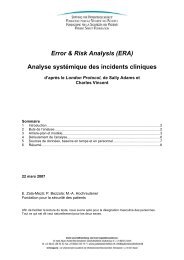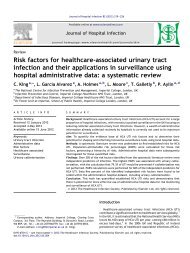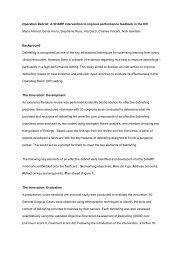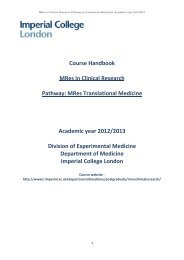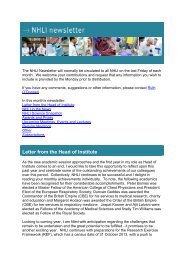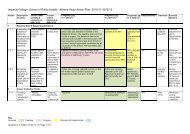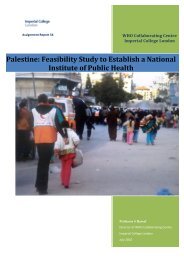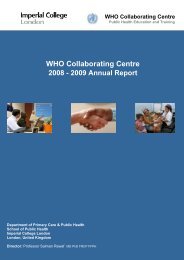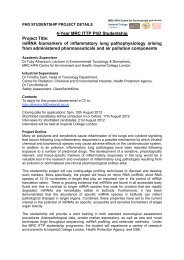An Introduction to qRT-PCR Assays Using Sybr Green (Using SDS ...
An Introduction to qRT-PCR Assays Using Sybr Green (Using SDS ...
An Introduction to qRT-PCR Assays Using Sybr Green (Using SDS ...
You also want an ePaper? Increase the reach of your titles
YUMPU automatically turns print PDFs into web optimized ePapers that Google loves.
Reaction conditions:Initial step:Taq activation95°C 10 minutes40 cycles of:Denaturation<strong>An</strong>nealing/Extension95°C 15 seconds60°C 60 secondsConfirmation of Product SpecificityAs primers alone determine the specificity of the assay, it is essential <strong>to</strong> confirm thatthe correct product is amplifiedThis can be accomplished in three ways: by gel electrophoresis, sequencing <strong>to</strong>confirm product identity and melting curve analysis.1. Gel electrophoresis – run 10-15 ul of sample on agarose gel2. Sequence – cut band from gel, and direct sequence3. Melting Curve – using 25 ul of <strong>PCR</strong> product on <strong>SDS</strong> 7700 (takesapproximately 20 mins). Ramp temperature from 60 <strong>to</strong> 95°C and recordfluorescence. When this is plotted in ‘Dissociation Curve’ software asrate of change, this will highlight the melting temperature of thedouble-stranded product, and will indicate the presence of any primerdimers.Use a temperature just below the product melting peak forrecording fluorescence during real-time <strong>PCR</strong> run.Do not use primers for q<strong>PCR</strong> if you doubt their specificity!3. Extract RNACollect samples for analysis and either snap freeze or s<strong>to</strong>re in RNApreservation medium such as RNAlater (Ambion). We have used the latter forsome time and found it <strong>to</strong> work well.Extract RNA according <strong>to</strong> desired pro<strong>to</strong>col – we typically useTriReagent from Sigma-Genosys <strong>to</strong> isolate <strong>to</strong>tal RNA. Either <strong>to</strong>tal RNA ormRNA may be used. We have found that homogenising using a Fast-Prephomogeniser system combined with a half volume Tri-Reagent extractiongives good yields – routinely around 4-6 ug of <strong>to</strong>tal RNA from paired retina,and up <strong>to</strong> nearly 20ug from paired eyes. We usually resuspend pelleted RNAin around 20 ul of RNase-free water, either DEPC or RNASecure treated (thelater is simply added <strong>to</strong> water and activated by heating <strong>to</strong> 60°C).



